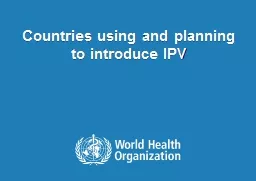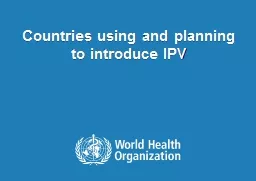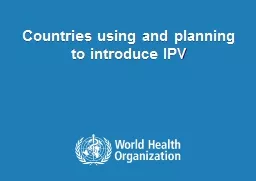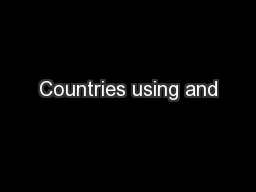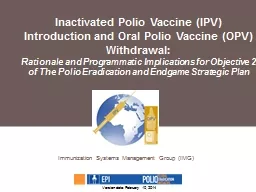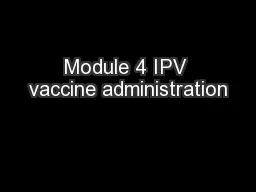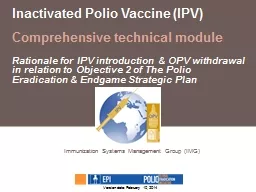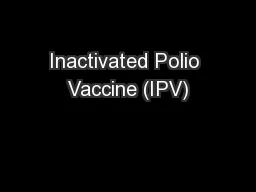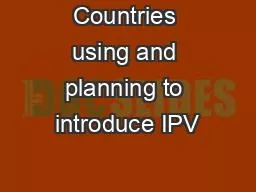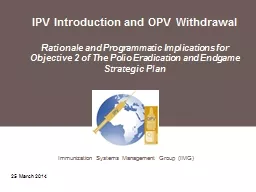PPT-Countries using and planning to introduce IPV
Author : natalia-silvester | Published Date : 2015-09-25
Countries using and planning to introduce IPV April 2015 status report This slide deck provides a summary per country on the status of planning for the introduction
Presentation Embed Code
Download Presentation
Download Presentation The PPT/PDF document "Countries using and planning to introduc..." is the property of its rightful owner. Permission is granted to download and print the materials on this website for personal, non-commercial use only, and to display it on your personal computer provided you do not modify the materials and that you retain all copyright notices contained in the materials. By downloading content from our website, you accept the terms of this agreement.
Countries using and planning to introduce IPV: Transcript
Download Rules Of Document
"Countries using and planning to introduce IPV"The content belongs to its owner. You may download and print it for personal use, without modification, and keep all copyright notices. By downloading, you agree to these terms.
Related Documents

